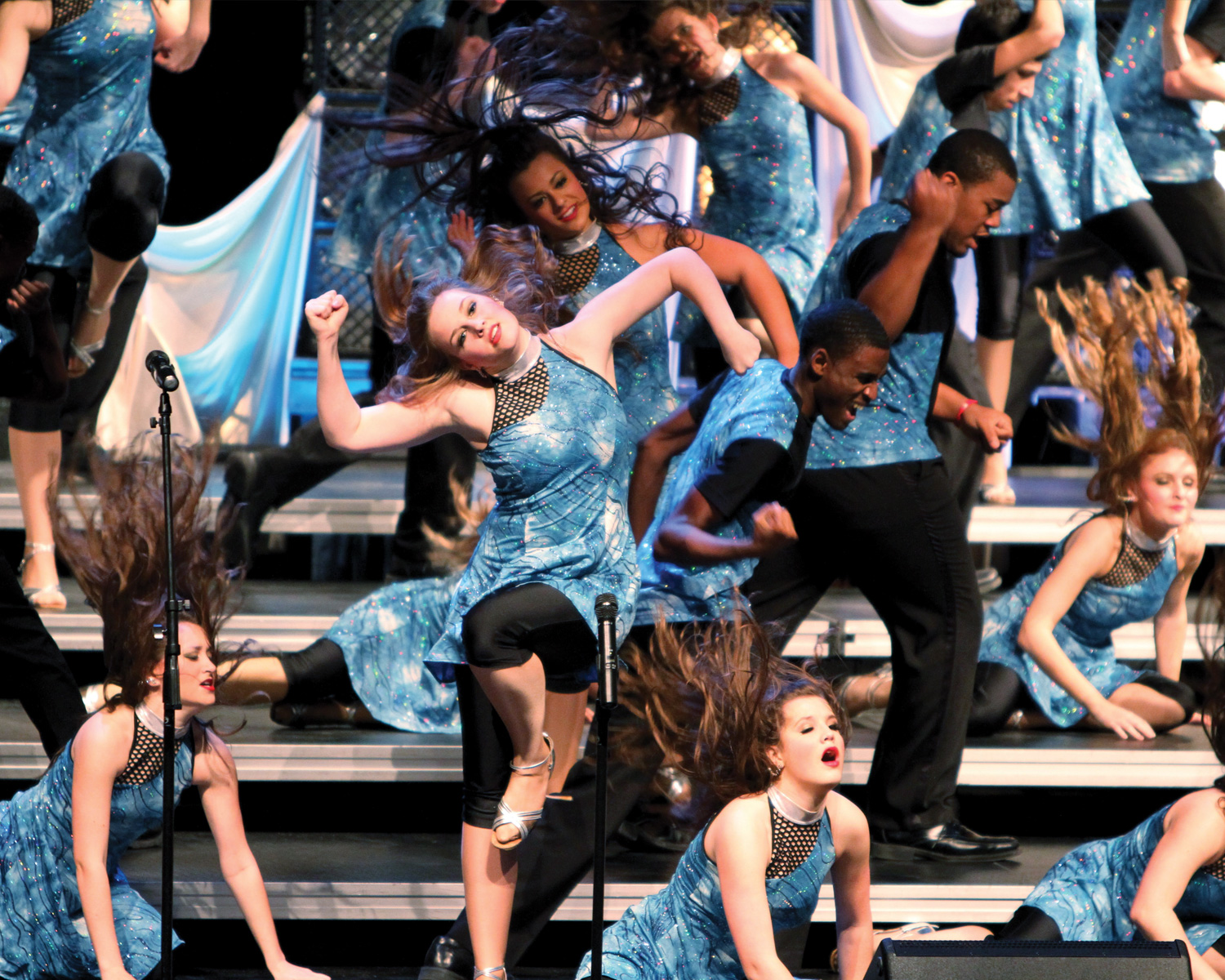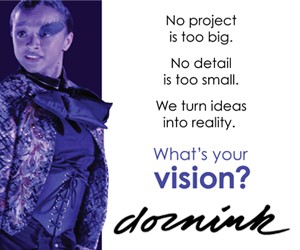
In science, everything is exact and precise. There are scientific principles as to why something “works.” In art-everything goes back to personal opinions as to why something “works.” And there are so many opinions that count:
- You, as the director
- Your assistant directors
- Your choreographer
- Your choir members
- Your costume designer
- Your booster parents
- Your school administrators
- Your school community
- Your friends and family
- Your choir members’ friends and family
- And all the judges you will be facing!
The same goes for judging your entire performance; in Olympic sports, for example, the athlete who makes it across the finish line first wins. But in Olympic figure skating, diving or gymnastics, the winner depends on the opinions of all the judges. This makes a sure win much more difficult. The same thing is coming into play: You want winning costumes, but there is no finish line; you must rely on opinions of many people and especially the judges.
BUT, thankfully there are some factors that can help you come up with winning costumes! Here are the eight building blocks that I feel are the most important:
- Theme
- Color
- Texture
- Silhouette
- Visual Movement
- Suitability
- Knowledge of judging
- Practicality
Theme
Costumes coordinate with the chosen theme of your competition program. A theme ties all of your songs together with a common thread. Your theme could be a color (“hot, fire colors”), an idea (“working for a living”), an era (“disco 70s”), or music (a particular Broadway musical or several similar musicals). Your theme can be literally anything that will make your selection of musical numbers fit together somehow.
Color
The colors you choose need to work with your theme. Think about the stage backdrop-don’t dress your choir in the same exact color of your background or the most common color for backgrounds at the venues where you perform. Use color coordination for visual effect. Keep in mind that stage lighting can alter your costume colors somewhat. Jewel tones (the colors of jewels such as red, blue, and green) are always a good choice.
Pastels can work, but they can easily look “washed out,” as they are close to skin tones-beige, light pink, light peach, and gold can all easily look like skin from the stage. Most importantly-the colors that you coordinate should have the same INTENSITY.
Don’t put vibrant jewel tones with a washed out pastel. Find or purchase an artist’s Color Wheel-you can find these at art supply stores or some office supply stores. Check out the colors that are labeled Primary colors (red, yellow, blue), Secondary colors (orange, purple, green), Tints (color+white), Shades (color+black), Warm colors (yellow, orange, red) Cool colors (green, blue, purple), Complimentary colors (across the color wheel), and Split Complimentary colors. Looking at all these colors will help you make choices as to what colors look good together. But remember-this is still all subjective! Look at these colors on stage, from the back of the theater, to get the real visual.
Texture
You want to create an interesting texture on stage, as it adds interest. Too much texture can be distracting, so a balance is what you are striving to create. Shiny or matte finishes are two different textures. Printed fabric can create textures-large or small prints, and then the colors used within the print can create texture.
Structural parts of costumes can create texture, such as pleats, gathers, tucks and ruffles. Embellishments also create texture. Rhinestones, sequins, beads, fringe, and feathers can add some very glitzy textures.
Silhouette
The shapes of garments can evoke a certain era in time. The correct silhouette can suggest the 1920s (dropped waist), 1960s (short, triangle shape), or 1980s (big shoulder pads and high waist), for example. Soft silhouettes versus hard shaped silhouettes can give different looks in costuming. You can create triangles and rectangles and circles. You can also alter these shapes by holding out the skirts with your hands.
Visual Movement
Silhouettes and fabrics can be used to create lots of movement. Some fabrics “drape” well and flow and show a lot of movement on stage. Chiffon and thin satins are great fabrics for this. Use stiff fabrics such as a heavy satin when you don’t want movement in a costume. Always try to visualize how a style and fabric will move on stage. Think individual and “en masse.” Don’t try to force fabrics to move differently from their nature.
Suitability
Do your costume styles fit your theme? Do they fit the “attitude” of your music? Do they fit or fight your choreography? Will your costumes be suitable for the age of the wearers, as perceived by your community? Are your costumes “appropriate” or too adult or too sexy? Will your costume designs look good on ALL your singers? Please take into account your large or small or oddly shaped choir members. They made it into your group, and they deserve to look good on stage, just like your singers with “perfect” shapes.
Knowledge of Judging
Know ahead of time what your judges’ likes and dislikes are. How? Attend workshops and training sessions, and learn from past critiques. Realize that ALL judging is subjective-it is only opinions. And different judges could have totally different opinions.
Practicality
There are two concepts at work here. First of all-will your costumes hold up to the rigorous schedule of your performances? They need to be built to stay together. If they will need laundering, you will need to know how to properly launder them. Your costumes need to stay properly on the body and not become dislodged. They will need to “perform” for you! And, you need to be able to afford the cost of these “perfect” costumes. Second of all, if you are planning costume changes during your performance, you will need to figure out how to work this out. Choreography, staging and your choice of who sings what will determine when and how costumes can be changed.
At Satin Stitches, we have worked with show choirs over the years on many themed costumes. My suggestion is to work with a PRO FESSION AL costume designer. A professional costume designer should be able to alert you to any possible problems with any of your design ideas. They will be knowledgeable about the “artsy” things such as what colors work well on stage and what fabrics will do your styles justice-for what you are trying to achieve. You may not know exactly what you want, but it is very helpful to be able to give your designer as much information as possible. The more you tell them about what you are trying to achieve, the better equipped they will be to deliver winning costume designs.
LISTEN to what your designer says! If they have reservations about if something will “work” or not, realize that they have knowledge that you may not have in this area. They are NOT trying to irritate you or make you mad. They are trying to help you create the best possible costumes for your show choir performance! Nothing is more frustrating than when I know that something is not a good idea, only to have my customer demand that it be done that way. It usually ends up with us having to rework the costume, once the customer sees what I was able to imagine.
All things are NOT possible. As professional costume designers, we have physical limitations with types of fabrics and construction techniques that dictate what can and cannot be done. Professional costume designers should also know what is flattering on different figure types. You must remember that anything might look good on perfect model bodies. Is your show choir made up of ALL perfect model bodies? You need to take into consideration ALL your talented singers when you make your costume choice. Imagine your costume style on your most oddly shaped singers before you proceed with your group order.
Work with samples to make SURE the designs will work for what you have in mind. There may be added costs for changing from your original design, but it is WORTH IT! If your final costumes don’t “work,” you will pay a much higher price than any up-front redoing of your sample. If your costumes don’t work, you may face totally redoing your finished costumes. That is why it is always best to allow for a long period of time for the design process before you place your final order.
This is a lot of information to process, but all of this information needs to be taken into account when you are contemplating new costumes for your winning show choir! You are probably already thinking about many of these building blocks, and your professional costume designer should raise all of these questions in working with you. If you go into your design project with most of the answers, you have a much better chance of succeeding with your winning show choir costumes!
Photography courtesy of Satin Stitches Ltd.










